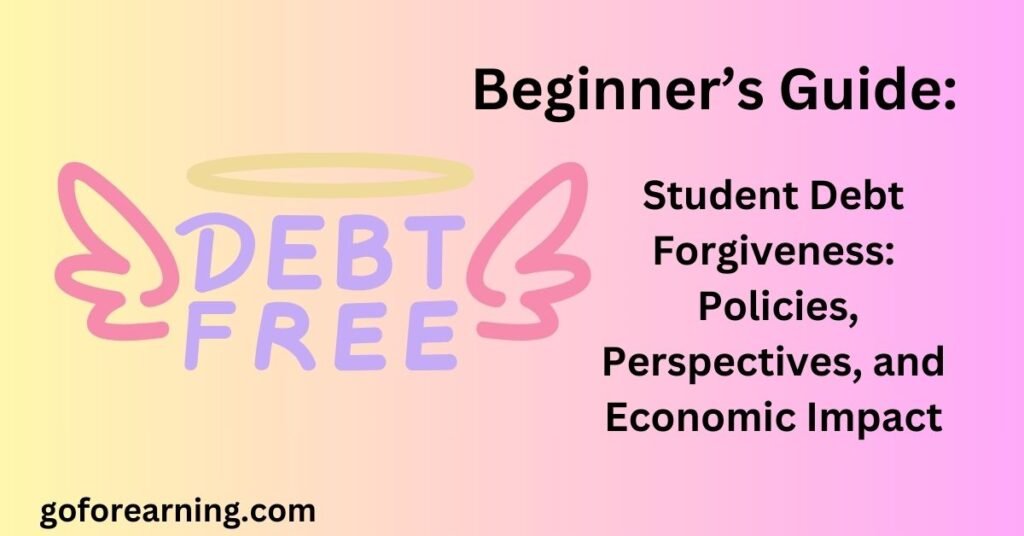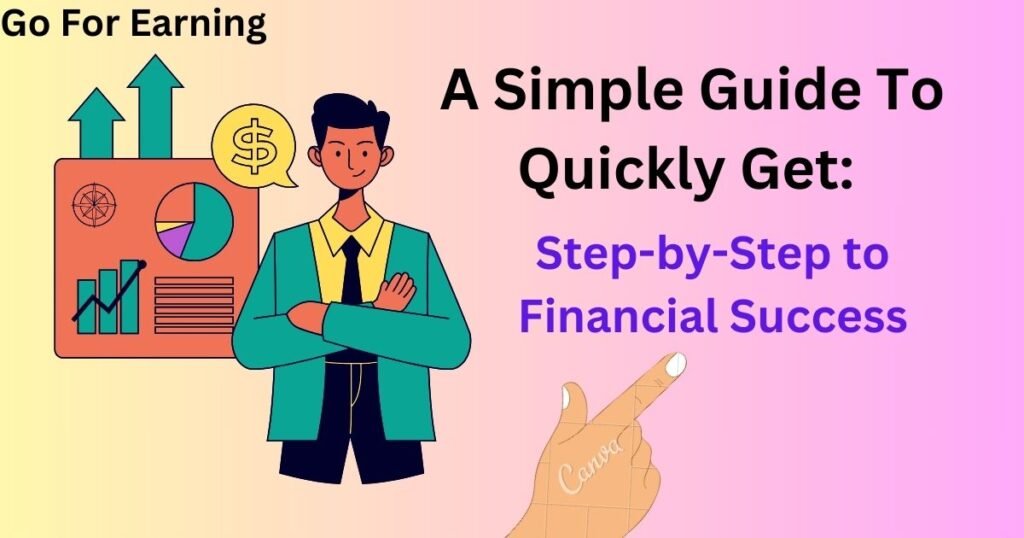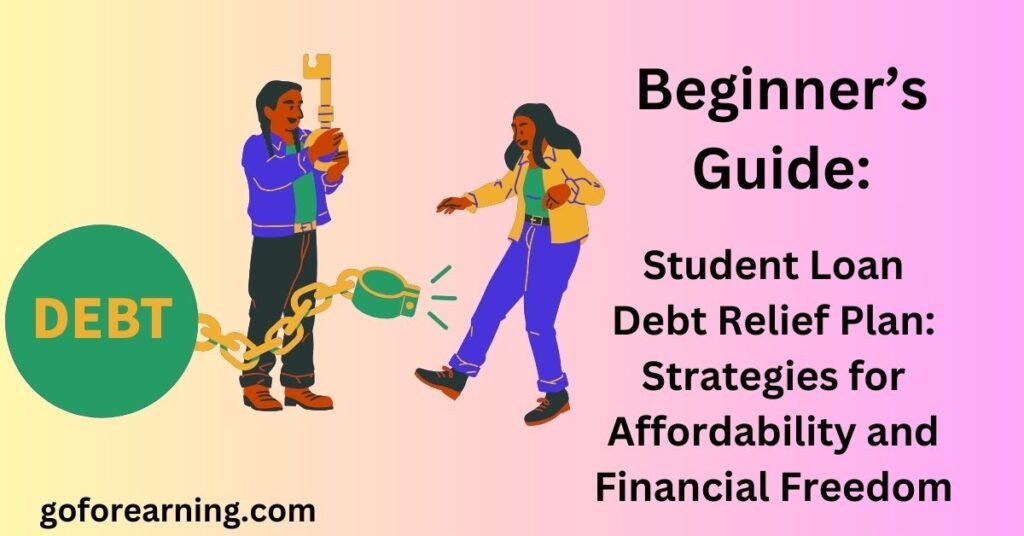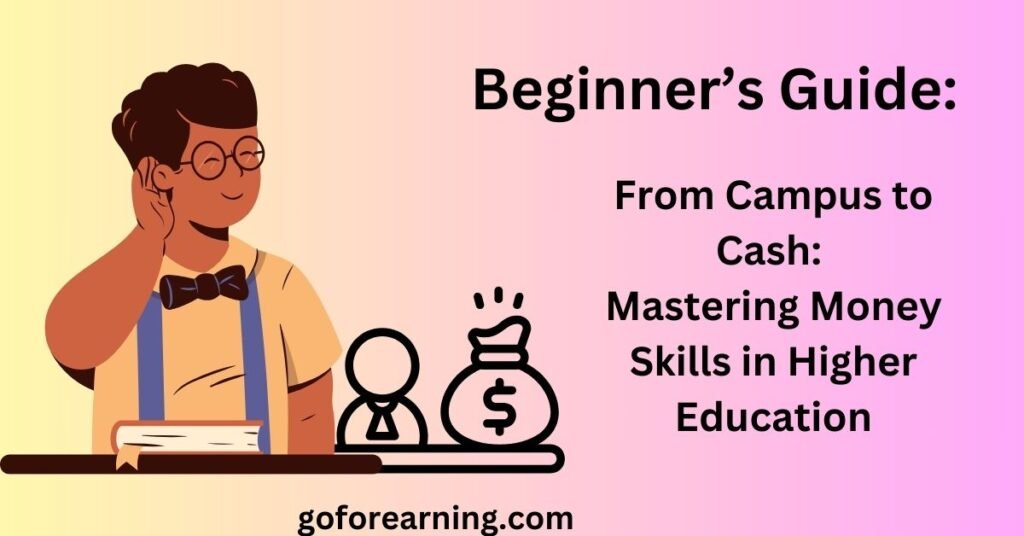Student debt forgiveness refers to the cancellation or reduction of outstanding student loan debt. There has been a lot of talk and focus on this subject, especially in the United States. Here are some important facts about forgiving student loans:
Government Initiatives

List of Countries with Forgiveness Programs
- United States: The U.S. has a number of loan forgiveness schemes, such as Public Service Loan Forgiveness (PSLF) and Income-Driven Repayment (IDR) plans.
- Other Countries: Some European countries have canceled student loans or are looking into it as a way to make college more available and ease the financial burden on grads.
Good reasons to forgive
- Economic Stimulus: Some people say that forgiven student loans can help the business by adding money to it. Graduates who have less debt may have more money to spend, which is good for the economy because it means more spending.
- Social Equity: People who support forgiveness stress how important it is for promoting social and economic equality. High amounts of student debt can hurt low-income people and areas more than others, and they can also make race differences worse.
Public Policy Discussions

Debate on Widespread Forgiveness
- Concerns About Moral Hazard: Some critics say that widespread forgiveness could lead to careless borrowing and giving because people who borrow money might think that they will be forgiven.
- Targeted vs. Broad Forgiveness: Some people argue for targeted forgiveness, which focuses on certain groups or income levels, while others argue for forgiveness for everyone.
International Perspectives
- Comparison with Other Countries: One common way to talk about this is by comparing the student loan systems and repayment programs of different countries to see how well they work and what effects they have.
Different Types of Programs to Forgive
Repayment plans based on income
- Graduated Repayment: At first, the payments are lower, but they get higher over time as the borrower’s income grows, hopefully.
- Pay As You Earn (PAYE) and Revised Pay As You Earn (REPAYE): These plans limit monthly payments to a certain amount of extra income and forgive the debt after 20 or 25 years of making payments that meet the requirements.
Public Service Loan Forgiveness (PSLF)
- Qualified Employment: To be eligible for PSLF, you must work full-time for a qualified company, usually in the public or non-profit field.
- Qualifying Payments: People who borrow money must make 120 qualifying monthly payments on a qualifying payback plan.
Critics and Challenges
Financial Effects
- Taxpayer load: Many critics question whether or not broad forgiveness is financially possible, which makes people worry about the load on taxpayers who may not have benefited from higher education.
Alternatives and Reform
- Focus on Education Costs: Some people say that the problem should be fixed by lowering the cost of education so that more people can afford it, instead of forgiving people after the fact.
Effects on the economy
Spending and investments by consumers
- Extra money: Less student debt means less debt could mean more money for other things, like buying homes, starting businesses, or investing.
- Economic Growth: The idea is that more investment and spending can help the economy grow as a whole.
Social and racial justice
Differences in student debt
- Effects on minorities: Black and Hispanic groups are hit the hardest by student debt, which makes racial wealth gaps even bigger.
- A Chance to Go to College: Forgiveness is thought to be a possible way to help equalize entry to college.
Laws and rules that are changed
How rules change over time
- Policy Shifts: The direction of student debt forgiveness policies can be changed by changes in the government and how people feel about it.
- Active Debate: People are still talking about the issue, and they are arguing about whether or not lawmakers need to take action and what kinds of changes might be made.
In conclusion, there are many sides to the debate about forgiving student loans, including political, social, and economic ones. Finding the right mix between helping people who are struggling with debt and fixing the bigger problems with the way schools pay for things is still a tough and changing problem.
FAQs:
Q: What is student loan forgiveness?
A: Student loan forgiveness refers to the cancellation or reduction of the outstanding student loan balance borrowers have. This can be done through various policies and programmes.
Q: What are the key policies for student loan forgiveness?
A: There are different offers and policies, including income-driven repayment plans, Public Service Loan Forgiveness (PSLF), and comprehensive loan cancellation initiatives, which differ in terms of eligibility criteria and the amount forgiven.
Q: Who is eligible for student loan forgiveness?
A: Eligibility criteria depend on the specific forgiveness program. Common factors include the type of loan, repayment plan, employment in certain sectors and meeting specific requirements over a specified period.
Q: What is the economic impact of student loan forgiveness?
A: The economic impact is a matter of debate. Proponents argue that it can stimulate the economy by freeing up disposable income and encouraging spending, while critics express concerns about the potential strain on government finances and moral hazard.
Q: How does student loan forgiveness affect borrowers and their families?
A: For borrowers, loan forgiveness can reduce financial stress, enhance creditworthiness, and provide greater economic mobility. Households may also benefit indirectly as borrowers have more resources to invest in home ownership, education and other areas.
Q: Are There Any Potential Drawbacks to Student Loan Forgiveness?
A: Critics argue that large-scale loan forgiveness could create moral hazard, where individuals are less motivated to make informed financial decisions, and it could create challenges for the government in terms of budgetary constraints.
Q: What role does public opinion play in shaping student loan forgiveness policies?
A: Public opinion plays an important role, as policy makers consider the views of citizens when formulating and implementing policies. Opinions vary widely on the fairness and feasibility of loan forgiveness.
Q: How does student loan forgiveness affect different demographic groups?
A: Taking into account income levels, racial and ethnic disparities, and generational differences, the impact may vary between demographic groups. Understanding these nuances is essential to evaluating the equity of forgiveness policies.
Q: Are there international examples of successful student loan forgiveness programs?
A: Some countries have implemented successful student loan forgiveness programs. Analysis of these international examples can provide information about the potential benefits and challenges associated with such policies.
Q: How can individuals stay informed about changes in student loan forgiveness policies?
A: Individuals can stay informed through updates from official government websites, financial news outlets and relevant educational institutions. Consulting with financial advisors and participating in advocacy groups can also provide valuable information.





